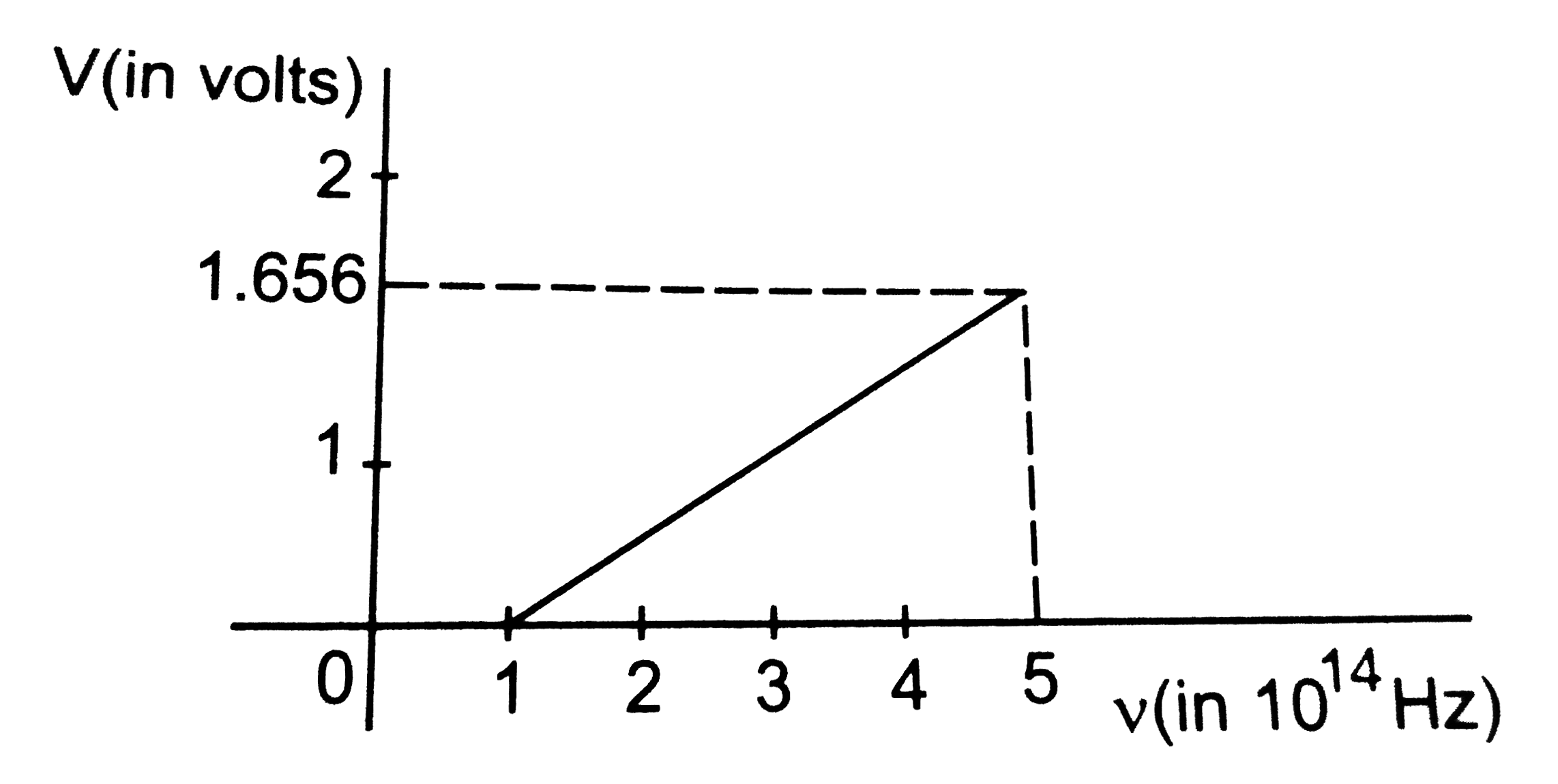The surface of cesium is illuminated with monochromatic light of various wavelengths and the stopping potential for the wavelength are measured. The results of this experiment is plotted as shown in the figure Estimate the value of work function of the cesium and Planck's constant.
_E01_165_Q01.png)
The correct Answer is:2eV,6.53×10−34J−s
We, have eV0,hcλ−ϕ=hv−ϕ⇒V0=hve−ϕe
from graph, ϕe=2V⇒ϕ=2eV
Also slopes of the graph =20.49×1015=he
⇒h=2×1.6×10−190.49×1015=6.536×10−34J/sec
Topper's Solved these Questions
- BOOK - ALLENCHAPTER - SIMPLE HARMONIC MOTIONEXERCISE - Exercise-05(B)46videos
SIMPLE HARMONIC MOTION
- BOOK - ALLENCHAPTER - SIMPLE HARMONIC MOTIONEXERCISE - MCQ s8videos
SIMPLE HARMONIC MOTION
- BOOK - ALLENCHAPTER - SIMPLE HARMONIC MOTIONEXERCISE - Exercise - 581videos
SIMPLE HARMONIC MOTION
- BOOK - ALLENCHAPTER - RACEEXERCISE - Basic Maths (Wave Motion & Dopplers Effect) (Stationary waves & doppler effect, beats)24videos
RACE
- BOOK - ALLENCHAPTER - TEST PAPEREXERCISE - PHYSICS4videos
TEST PAPER
Similar Questions
When a metallic surface is illuminated with monochromatic light of wavelength λ, the stopping potential is 5V0. When the same surface is illuminated with light of wavelength 3λ, the stopping potential is V0. Then the work function of the metallic surface is:
View SolutionWhen a metallic surface is illuminated with monochromatic light of wavelength λ, the stopping potential is 5V0. When the same surface is illuminated with the light of wavelength 3λ, the stopping potential is V0. Then, the work function of the metallic surface is
View SolutionWhen a certain metallic surface is illuminated with monochromatic light of wavelength λ, the stopping potential for photoelectric current is 3V0 and when the same surface is illuminated with light of wavelength 2λ, the stopping potential is V0. The threshold wavelength of this surface for photoelectrice effect is
View Solution
Using the graph shown in the figure for stopping potential vs. the incident frequency of photons, calculate Planck.s constant.View SolutionA photoelectric surface is illuminated successively by monochromatic light of wavelength λ and λ2. If the maximum kinetic energy of the emitted photoelectrons in the second case is 3 times than in the first case , the work function of the surface of the material is
(h = Plank's constant , c = speed of light )View SolutionA photoelectric surface is illuminated successively by monochromatic light of wavelength λ and λ2. If the maximum kinetic energy of the emitted photoelectrons in the second case is 3 times than in the first case , the work function of the surface of the material is
(h = Plank's constant , c = speed of light )View SolutionFigure is the plot of the stopping potential versus the frequency of the light used in an experiment on photoelectric effect. Find (a) the ratio h/e and (b) the work function.
 View Solution
View SolutionWhen a piece of metal is illuminated by monochromatic light of wavelength λ, then stopping potential is 3Vs. When the same surface is illuminated by the light of wavelength 2λ, then stopping potential becomes Vs. The value of threshold wavelength for photoelectric emission will be
View SolutionWhen a metalic surface is illuminated with light of wavelength λ, the stopping potential is V. the same surface is illuminated by light of wavelength 2λ the stopping potential is V3 The thershold waelength for the surface is
View SolutionA metal surface of work function 1.07eV is irradiated with light of wavelength 332nm. The retarding potential required to stop the escape of photo - electrons is
View Solution

